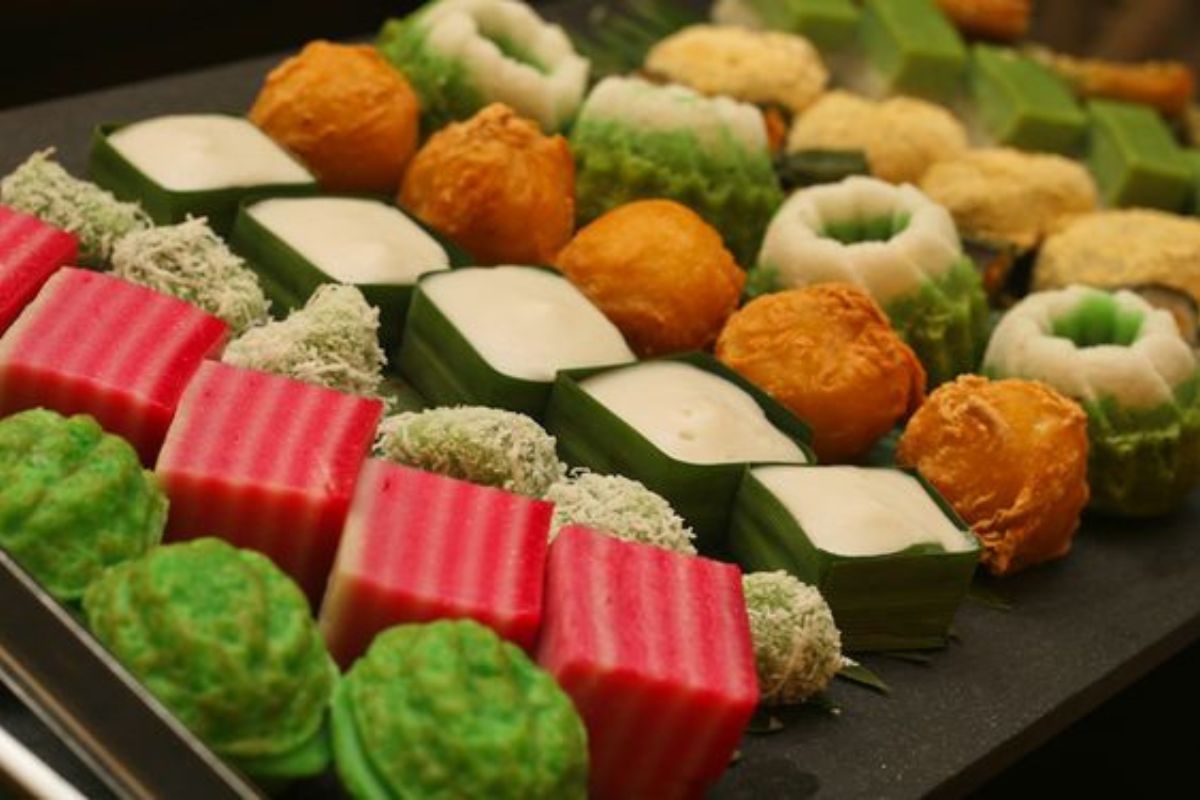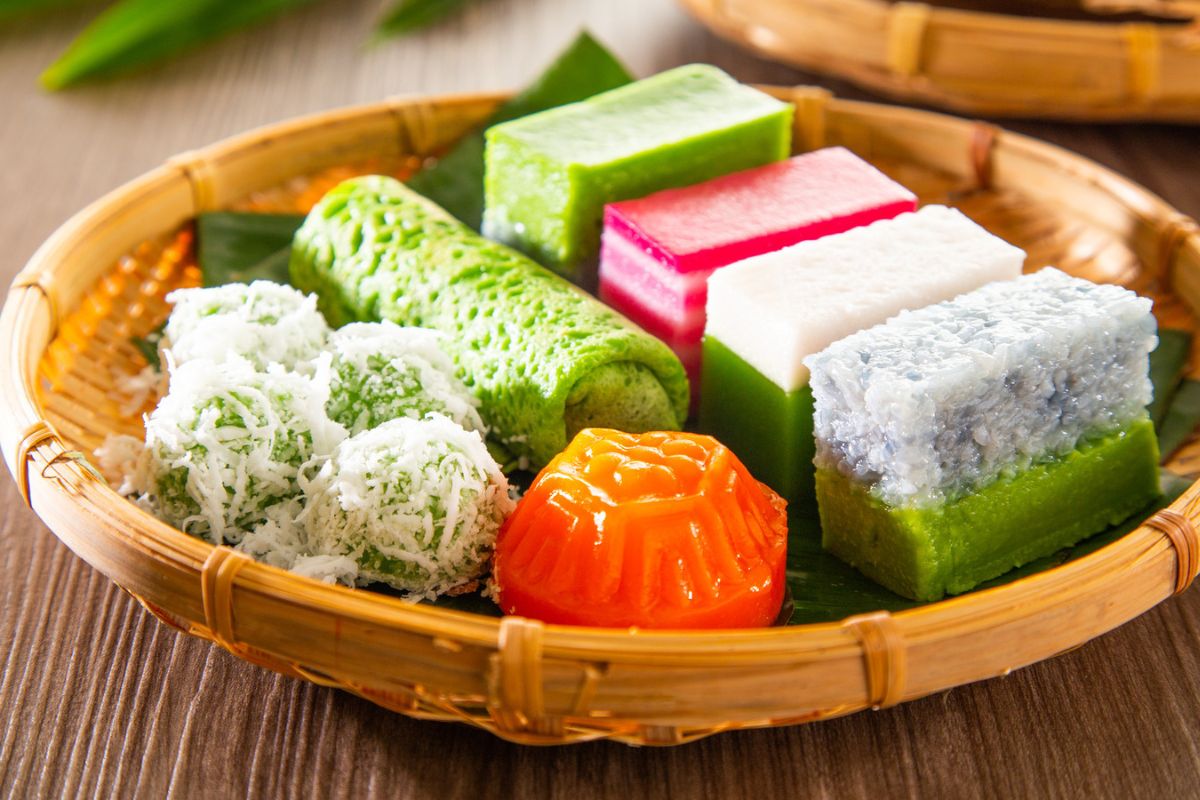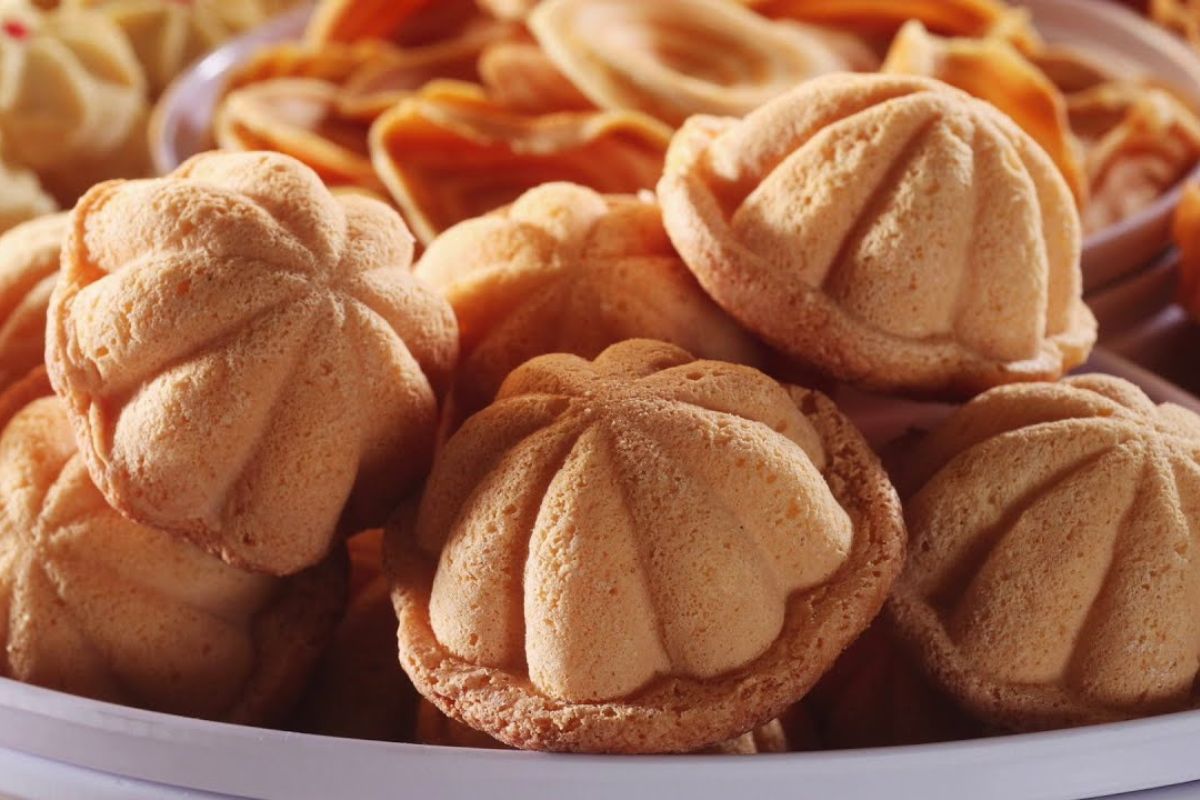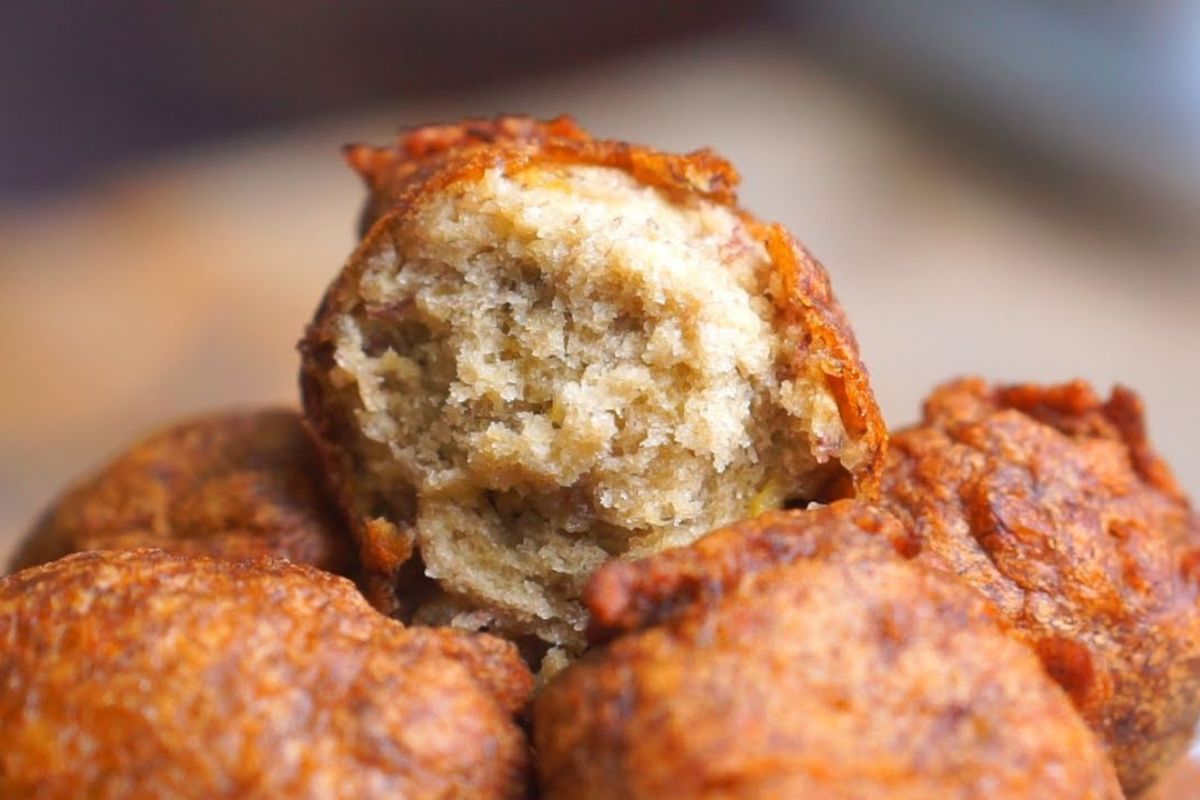Coming to Malaysia, visitors will be delighted by the beautiful, colorful cakes. It’s Nyonya Kuih, a traditional snack in this ancient Southeast Asian country. A plate of traditional Kuih cakes with many childhood memories appears on every corner of the streets of Malaysia.

Nyonya Kuih is a traditional cake, refined by the Chinese community who migrated to Malaysia. In Malaysia, Kuih is the affectionate name locals give this cake, whereas Nyonya is another term for the Peranakan population, the Chinese people who live in Southeast Asia. Due to their gorgeous colors and forms, Nyonya Kuih cakes are particularly eye-catching and draw visitors while they are visiting Malaysia.
The traditional cake Nyonya Kuih attracts visitors with its sophistication and rusticity
The ingredients used to make Nyonya Kuih in Malaysia include rice flour, sugar, shredded coconut, green beans, coconut water, and natural plant-based colors. The cake also contains wheat flour, which is a component that is uncommon in Southeast Asian traditional cakes. Kuih cakes come in a variety of shapes, colors, and flavors. The filling is worked until it resembles a piece of custard jelly and is smooth and velvety.
The color is what draws people’s attention to Kuih cake. It comes in a variety of striking hues, including green, yellow, orange, purple, and ultramarine, which is the most challenging to create. The fact that craftsmen can produce such colors shows how highly skilled they are. To produce Kuih cake crust in the traditional Malaysian way, coloring goods derived from fruits and vegetables must first be manually prepared. The majority of Kuih cakes are sweet with a soft filling consisting of green beans or shredded coconut. Kuih takes part in celebrations like Hari Raya and the Lunar New Year in Malaysia, Indonesia, Brunei, and Singapore.

Photo: Tasting Table
Even today, practically all Kuih cakes are still produced by hand, so the cook must not only use less of the customary amount but also be skilled at shaping them into gorgeous cakes with delicate imprinted designs. The baker forms the cake into balls manually and then pushes them into a prepared mold. The cake is decorated with designs that are distinctive to the local culture.
Given that Kuih has Chinese origins, the baker must still adhere to the spiritual cooking technique used by the Chinese people, which forbids excessive chopping and cutting to avoid bad luck like dispersion. Diners can find this rustic dish everywhere in markets or cafes in Malaysia. One of them is RizCoconut, a traditional bakery in Kuala Lumpur opened by a Chinese chef.
Indulge in a variety of Kuih cakes
Steamed Kuih has a sweet flavor
Steaming is one technique for creating Kuih. Kuih Bakul, a delicate, sweet, and chewy meal, is the name of the exquisite cake baked by steam. The mixture of sugar, glutinous rice flour, and water in traditional Kuih Bakul must be cooked for at least 10 hours at a constant temperature until it becomes a smooth mass.
Southeast Asia is a prominent region for this cake, which has its origins in China. Similar variations are available worldwide. For instance, it is referred to as Kuih Bakul in Malaysia, known as Tikoy in the Philippines, and Banh To in Vietnam.

Grilled Kuih with many special flavors
For most sweets, baking is a common way of preparation. Kuih Bahulu is a well-known snack that employs this technique. The cake’s exterior is crispy and similar to Madeleine, another well-liked morning dish. During the Lunar New Year and Eid al-Fitr, Kuih Bahulu is frequently presented.
Bangkit Kuih, a kind of cookie, is another baked Kuih example. When you bite into this cookie, unlike most others, it melts in your tongue and you can taste the sweetness of the coconut. This is also a popular snack during Eid al-Fitr.
Delicious with Kuih’s savory version
Since Kuih may be savory as well, it’s not surprising that frying is used in this recipe. Kuih Bakul cooked with either taro or sweet potato in Malaysia creates Cekodok, often referred to as jemput-jemput. This is a traditional snack preferred in Malaysia, Brunei, and Singapore that is another sort of Kuih produced by frying.
Kuih Siput, a salty and crispy snack, is another popular dish from the Kuih culture that is prepared by frying, like other well-liked delights like fried jackfruit and fried bananas. Kuih Siput cake is also quite popular throughout the holiday season.

Return to childhood with Kuih snack
Dodol is a toffee-like snack that was first consumed in Indonesia and is now widely consumed across Southeast Asia. Dodol is created with three components, including glutinous rice flour, palm sugar, and coconut milk. The mixture is stirred for several hours while being cooked at a low temperature until it caramelizes. Up to 12 hours can be spent cooking.
Additionally, this snack is a must-have for celebrations such as Hari Raya and the Lunar New Year in Malaysia, Indonesia, Brunei, and Singapore. Not only popular in China and Malaysia, this snack is also well-liked in Singapore and comes in various forms in Thailand, Vietnam, Indonesia, and Brunei.

